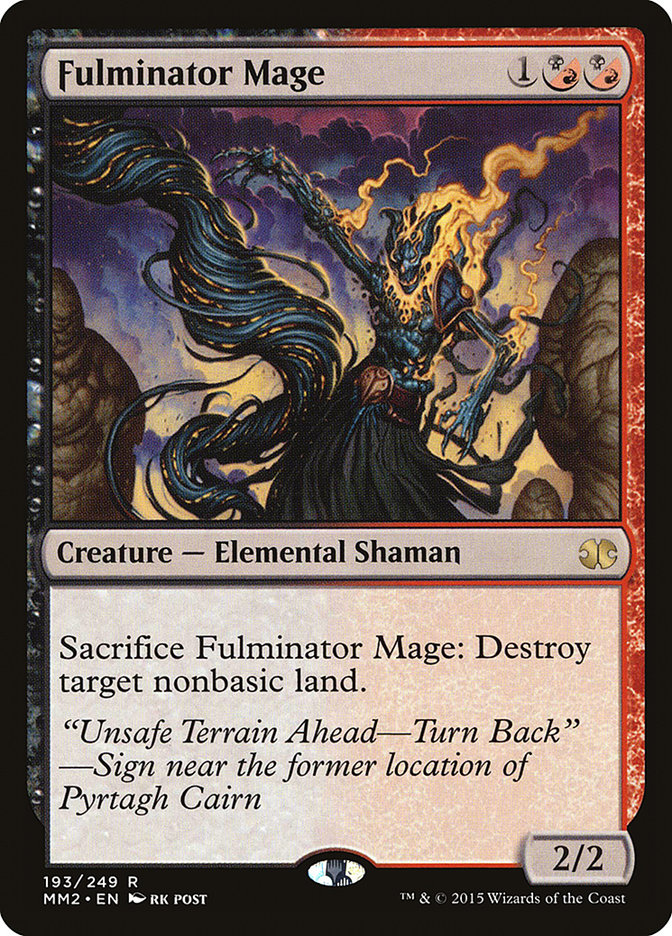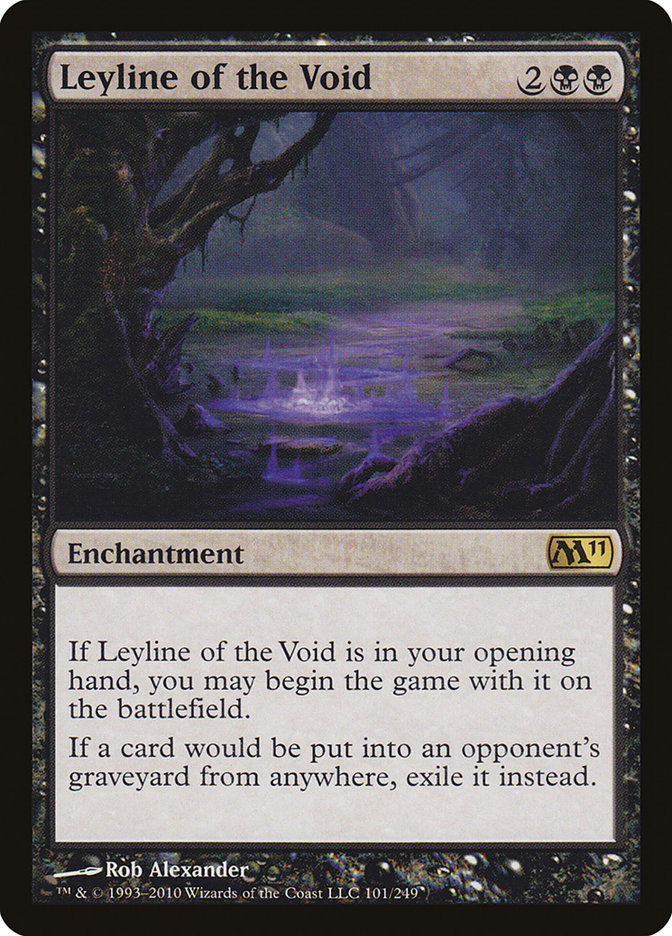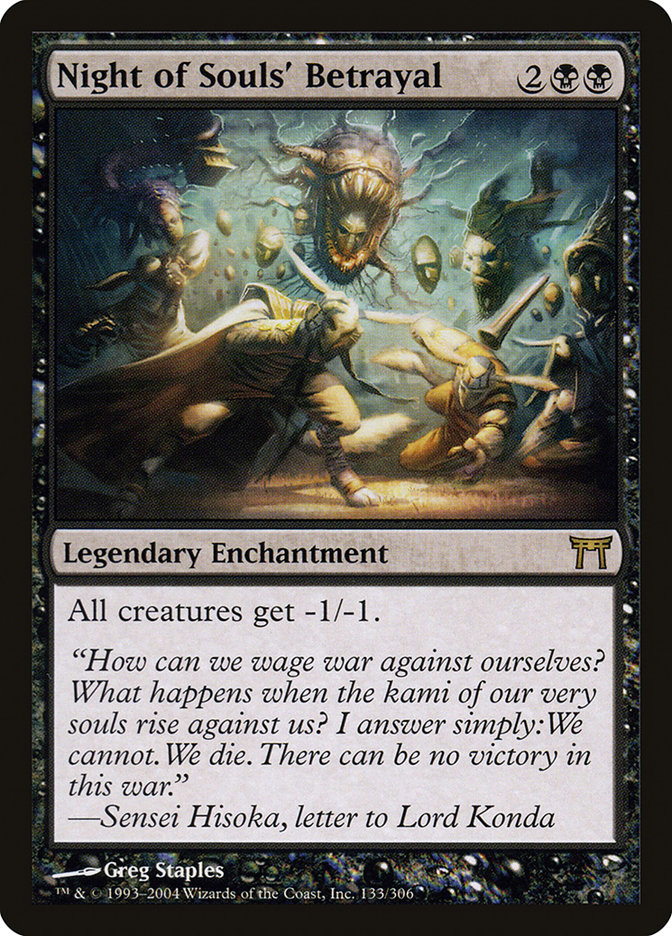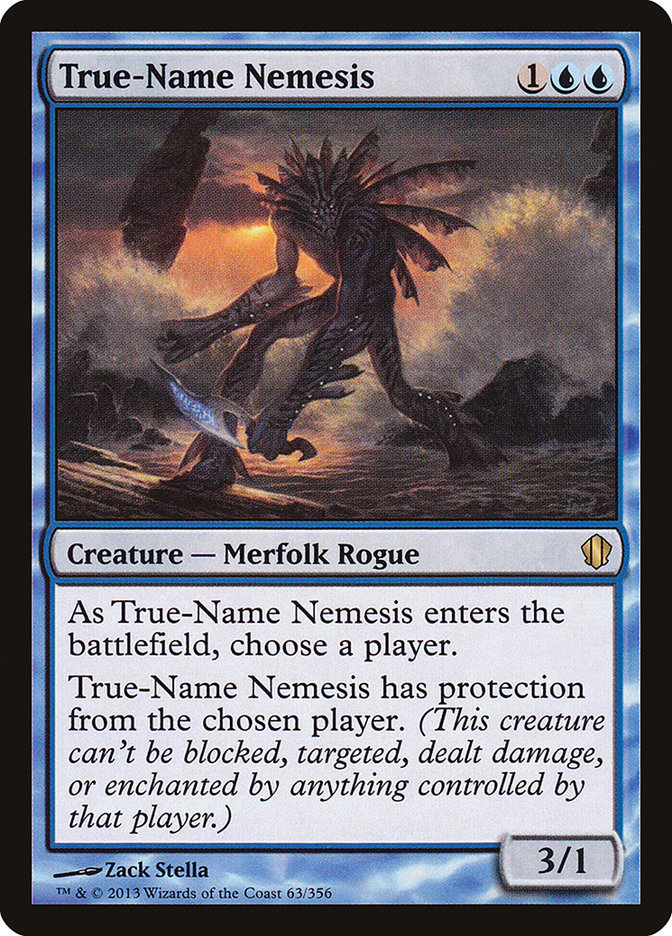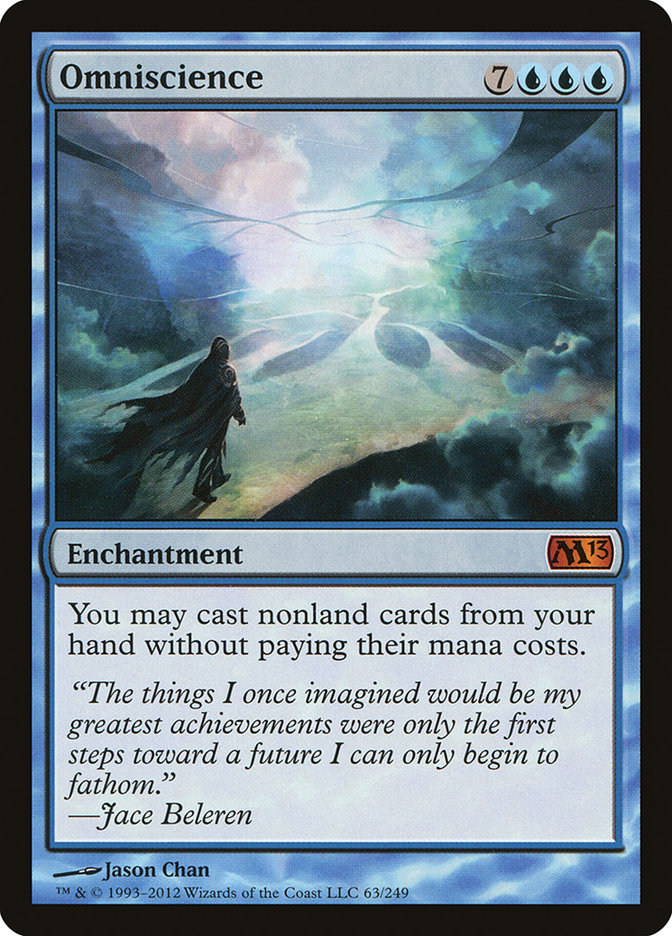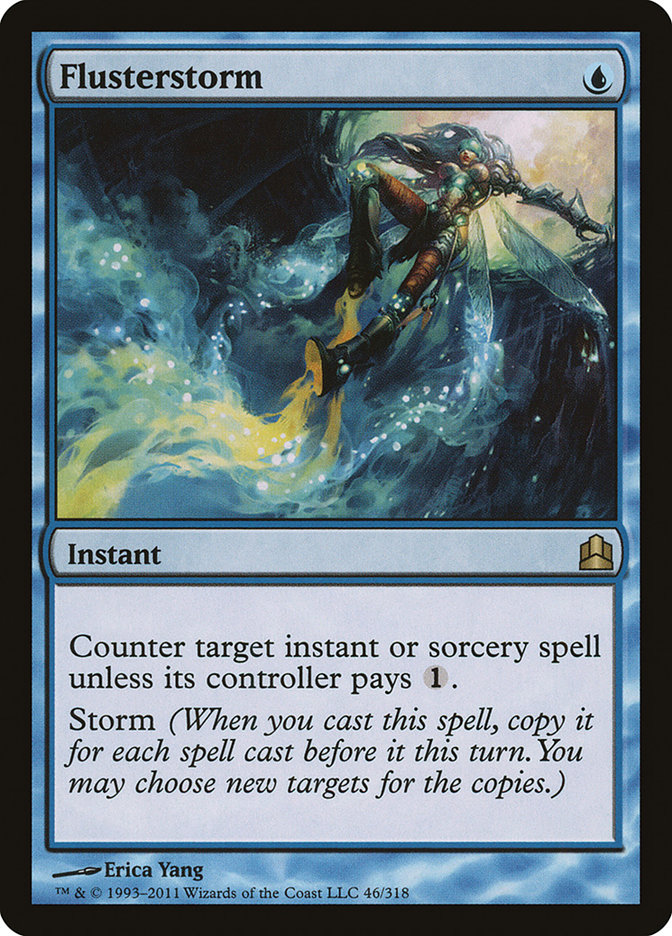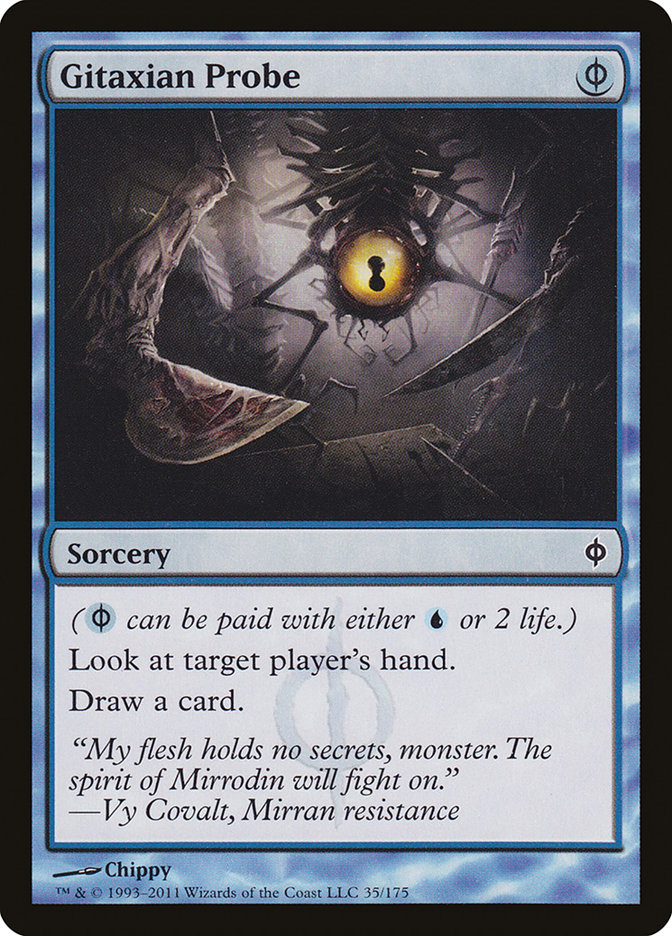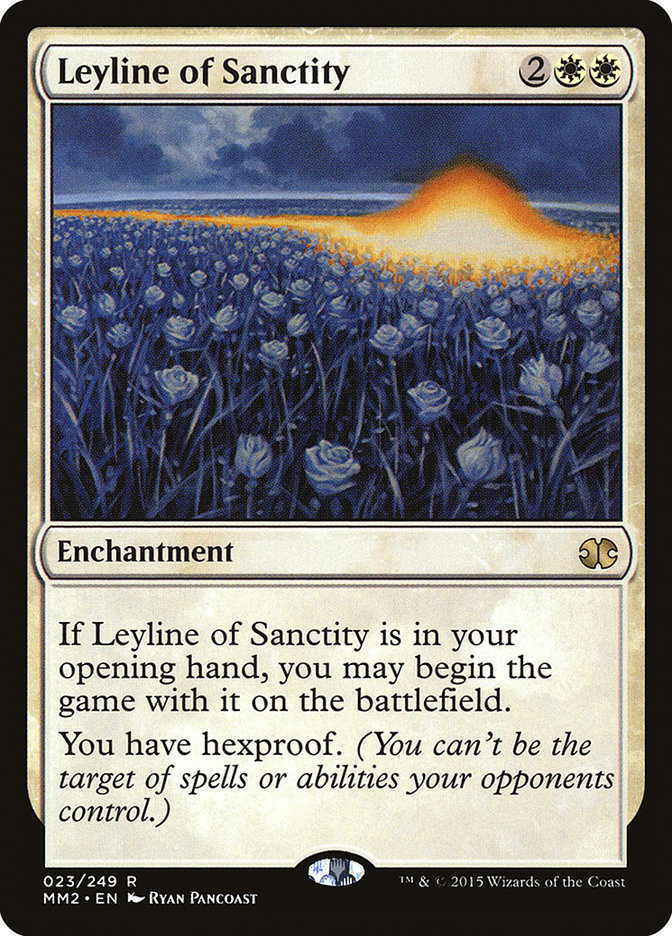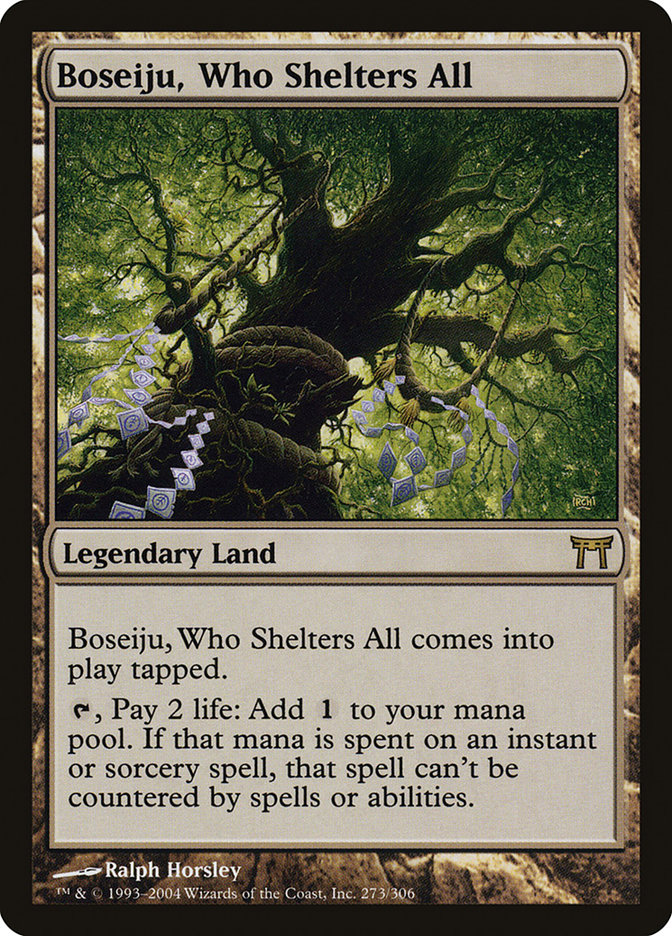With #GPLouisville just around the corner, all eyes are on Legacy. After spending a week and a half testing for the Players’ Championship locked in a room with Brad Nelson, I got a lot of Legacy testing done in the process. But for me, a lot of “testing” in older formats like Modern and Legacy involves using a lot of existing information to determine what the best deck to play will be. Then, after deciding on the archetype itself, we test variations to figure out the best configuration for the expected field.
Testing a bunch of different decks in Modern and Legacy is very difficult, due to the high cost and decks sharing so many cards. Plus, a human being can only take so much of the Jund vs. Tron matchup before they quit playing a format entirely. At some point, you just know a matchup is bad or good, and testing it any more is just wasting time.
In Modern, there are a lot of polarized matchups that are basically pointless to test. You can still win, and adding a few more sideboard cards could help, but how much better does the matchup need to get for each additional sideboard slot? Those fifteen extra cards are a resource that has to be spread around to maximize their value. That’s why I refuse to play Fulminator Mage or Blood Moon to “beat” Tron.
For one, their entire deck is designed to hit Tron. Killing one of their lands is only as good as how much pressure you’re currently putting on them. Blood Moon is a solid card against them, but it doesn’t outright win the game. They can still cast their spells eventually. Plus, they could just use Oblivion Stone or Nature’s Claim after sideboarding.
And you have to actually draw your sideboard cards.
Long story short, each sideboard slot in Modern should have value in multiple matchups. Polarizing decks often lead to polarized sideboard cards, since their sheer strength deserves a strong response. That’s why you’re starting to see more copies of Leyline of the Void to fight Dredge. That’s why you’re starting to see more cards like Night of Souls’ Betrayal and Gut Shot to fight Infect. These are natural reactions to certain decks dominating a format, but that doesn’t necessarily mean you have to overreact.
In a given Modern tournament, you’re unlikely to play against the same deck more than twice over the course of eight rounds. That means dedicating three or more slots to one matchup is reckless. If the matchup is bad, and that card probably wins the game on the spot, and the deck in question is relatively popular, then I could see an argument for it. Modern contains a large card pool, so just make sure that you don’t have the ability to play slightly weaker sideboard cards that could potentially swing another fringe matchup or two.
Legacy is equally difficult to test, but for different reasons. Outside of Magic Online, Legacy is just too expensive for normal Magic players to own more than one or two decks. Plus, the odds of you playing against the same style of deck in a Legacy tournament is traditionally even lower than in Modern. Over the last year, Legacy has had a few decks spike in popularity, so that sentiment might not exactly ring true anymore. Miracles and Storm in particular seem to show up in higher numbers than any other deck. Delver of Secrets, the card, is probably the most-played card outside of Brainstorm, but even Delver decks vary wildly in design.
Creatures (14)
Lands (18)
Spells (28)

Creatures (16)
Lands (18)
Spells (26)

Creatures (15)
Lands (19)
Spells (26)

Some have Stifle. Some have Cabal Therapy and Young Pyromancer. The disruption and removal varies wildly among builds, and preparing to beat one will not always help you beat another. The versions that play Cabal Therapy are much stronger against a combo-oriented field, where the versions that play Abrupt Decay are better at fighting stuff like Counterbalance or other fair strategies.
My point is this: you can playtest as much as you want in Legacy and end up feeling like you accomplished very little. With so many ways to dig for certain cards in Legacy, one or two cards can easily make all the difference between a matchup being good or bad. True-Name Nemesis, for example, could be impossible for your deck to kill, but the rest of your deck is inherently good against Delver decks.
And in this particular tournament, you end up facing off against the versions that play True-Name Nemesis instead of something like Tarmogoyf.
In my opinion, it is much more important that you understand how your deck works more than how it performs in a given matchup. If you know your deck down its core, it won’t be hard to navigate around what your opponent is going to throw at you. If you play a lot of Legacy in general, you start to get a feel for how all the decks operate. Playing against Storm with four or five different decks over the course of the last four or five years leads you to a much deeper understanding than playing your current deck against Storm for four or five matches. You can figure out most of the cards in their deck after the second turn.
Doing research in these formats is also just as important as playing games. Knowing all the potential hate cards, all the disruption, all the removal, and all of the threats will give you a better sense of how to build your deck before the tournament starts. Seeing trends in popularity of certain cards or decks will give you a better insight into whether or not your deck is viable. I mean, do you really want to play Elves in a field full of Miracles and Storm? Probably not.
Welcome to the Big Show
For the Players’ Championship, Brad and I decided to lock in Sneak and Show pretty early on. We knew that testing for three formats was going to take a lot of time, and picking archetypes was half the battle. After deciding on Sneak and Show, it was a race to see just how many configurations we could try out before the deadline to submit decklists. But the process began with trying to figure out what all of the other competitors would be playing, and building our deck accordingly.
If you know a lot about Sneak and Show, you’re probably aware that it is an underdog to fair decks with a lot of disruption, as well as any deck that gains a significant advantage during a resolved Show and Tell (think Reanimator or Metalworker). After coming to the conclusion that there wouldn’t be a ton of Delver in the field, Sneak and Show felt like a slam dunk. A powerful, consistent combo deck that gets to play fast mana? Sign me up! On top of that, Sneak and Show has game against just about every strategy in Legacy, so if people showed up with a deck we weren’t expecting, it was unlikely that we’d be dead in the water.
Creatures (8)
Lands (19)
Spells (33)

So once we got that out of the way, we went to work slicing potential sideboard candidates and changing a few cards here and there in the maindeck. We looked at 30 or so different Sneak and Show decklists from the last year, trying to figure out if there was something we were missing. Some people played Cunning Wish and Omniscience. Others went with Intuition. We decided that those versions were too slow, even though they gave the deck more consistency. The dig effects in Legacy are powerful and can usually find what you’re looking for. Adding a three-mana version of the same effect can put you under some immense pressure when assembling your combo.
Since we have eight ways to put a creature onto the battlefield and eight creatures, the likelihood of assembling the combo by the third turn is relatively high. If we run into a counterspell or discard effect, we need our dig spells to be cheap so that we can reassemble the combo in a hurry. We aren’t playing removal, so we don’t have ways to buy time against decks that put a clock on us. While we didn’t think Delver would be everywhere like in previous years, we needed our list to be lean enough to compete. When you start adding more spells to the mix that are vulnerable to Daze or hard to cast due to Wasteland, you fall further behind with each piece of disruption with no way to dig yourself out.
Some versions playing Omniscience have been doing well, and I don’t mind the card all that much as a counter to annoyances like Containment Priest, but once again we were at a crossroads. Do we want to play a bunch of cards that can only really help in fringe situations? How many percentage points do we add against decks featuring Containment Priest? And, if we think Containment Priest is going to show up in reasonable numbers, do we even want to play Sneak and Show?
One of the main reasons we picked Sneak and Show in the first place was because we didn’t think people would be bringing a lot of hate for it. If we tilted our deck in the direction to beat hate cards, at the expense of giving us a stronger plan against established archetypes and their likely builds then there was basically no reason to play Sneak and Show. But we were also metagaming for a smaller tournament. A Grand Prix is much more difficult to nail down because the field is so much larger, and the likelihood of playing against any deck more than twice is pretty low. In bigger tournaments, it is more important to be flexible and give yourself an out to as many cards as possible.
A single Omniscience, or Blood Moon, or Shattering Spree, or some other tool to get you out of sticky situations is much more appealing when you have no clue what subset of decks you’re going to face. And it also makes a choice like Sneak and Show a little more dangerous, because those precious fifteen sideboard cards can make all the difference. And if you’re wrong, or don’t have access the right answer, you’re going to lose.
At this juncture in testing for #GPLouisville, I want to cover all my bases. I want answers to Karakas plus Pithing Needle. I want ways to beat Containment Priest. I want to make sure that my other bad matchups are sufficiently shored up. With that in mind, here’s the list of Sneak and Show I’m more than likely going to play.
Creatures (8)
Planeswalkers (1)
Lands (19)
Spells (32)

This is nearly identical to Kentaro Yamamoto’s Grand Prix Chiba maindeck. Not only has it proven itself in a large Grand Prix field, but it also makes a lot of sense. A single Jace, the Mind Sculptor is usually a must-counter from Miracles, but it is also just a devastating early play if your opponent can’t pressure it immediately. I can’t really explain why, but it is difficult to justify another combo piece, counterspell, or dig spell. Jace, the Mind Sculptor just fills this sweet spot and acts as both a win condition and dig spell. I’ve loved maindeck Jace, the Mind Sculptor in the past, and I feel like right now is as good a time as ever to bring it back.
I still like the splits between Spell Pierce and Flusterstorm. Being flexible in this slot gives you ways to beat Force of Will when Spell Pierce wouldn’t always get the job done. But you still need ways to interact with stuff like Chalice of the Void and Counterbalance, so moving all-in on Flusterstorm is also a mistake. After sideboarding, I like having the second Flusterstorm for Storm, but it can be useful against a number of strategies, namely ones trying to attack your hand with discard spells.
Gitaxian Probe is notably missing from the list, but I think its value is overstated in decks like Sneak and Show. Our version is fairly redundant, and cycling cards is not nearly as good as picking and choosing from Preordain. Of course, being free versus costing one mana is not insignificant, and learning the contents of your opponent’s hand when playing a combo deck has value, but I’m expecting to face a lot more disruption in this tournament than usual. And if that’s the case, then I want to be able to find my other combo pieces as quickly as possible.
Gitaxian Probe has a funny way of drawing extra copies of the cards you already have in hand. And in a deck like Sneak and Show, we don’t have a way to use those extra resources unless we’re already winning the game. Ponder and Preordain are upgrades to Gitaxian Probe in this regard because they allow us to pick and choose what cards we keep (along with using fetchlands properly, of course). If we expect aggressive amounts of disruption, it does very little to figure out just what combination our opponent has in hand. And in that case, it is more important we try to make our best guess. And if we’re wrong, we have the tools at our disposal to go for it again in a turn or two.
After only playing three copies of Leyline of Sanctity for a while, I can safely say that I want four or zero. There are arguments to be made for playing three, but four just makes me feel a lot more comfortable against Storm, Burn, or other decks that could rip your hand apart with discard. It doesn’t win the game by itself, but it becomes much harder to lose when Storm can’t interact with you and has to find an answer in order to kill you. While those four slots in the sideboard are narrowly aimed at Storm, they can be useful in a number of other matchups. Some combo decks need to target. Others interact in the form of discard instead of Force of Will. While there is a chance you won’t sideboard in Leyline of Sanctity at all, I’m fine with high risk/high reward cards in a deck like Sneak and Show. We don’t want to sideboard too many cards in any matchup, so I want most of my sideboard cards to be hammers, not scalpels.
Omniscience helps cover most of the other bases that I’m worried about. It allows you to beat Karakas, Pithing Needle, Containment Priest, and any other permanent that might normally give you trouble. Casting Emrakul, the Aeons Torn is pretty good, I hear. While we aren’t all-in on Omniscience like some older versions featuring Dig Through Time, it is a nice tool to have if the field starts to lean heavily against you. You might cast a Show and Tell putting an Omniscience onto the battlefield and still lose the game, but it will be rare. Just be smart about how you cast your dig spells after it resolves. Don’t Brainstorm-lock yourself if you aren’t under much pressure. Waiting a turn so you can get maximum value from your fetchlands could be the difference in winning or losing.
For those struggling with sideboarding, or playing the deck in general, here are some useful tips.
1. Understand that it is all right to cut a land when you sideboard in Boseiju, Who Shelters All. I usually trim a City of Traitors.
2. Games tend to go longer after sideboard, so having all sixteen combo pieces in your deck isn’t necessary. I usually trim on Sneak Attack if my opponent is playing a lot of soft counterspells like Daze, Spell Pierce, etc. Cutting one Emrakul, the Aeons Torn is also fine if you need to make room.
3. In some matchups, sideboarding no cards on the play is correct. Just jam the combo down their throat. Recognize when you don’t have time to mess around with Pyroblast, extra copies of Flusterstorm, etc.
4. When in doubt, just jam.

This mostly applies when you’re under a significant amount of pressure. You can draw into more combo pieces, but you can’t get extra turns. If they have to use a Force of Will, it will usually slow them down as well. Plus, you’re gaining resources in the exchange. Sometimes it is just correct to make them have it. The worst thing that can go wrong is they counter it.
5. You won’t be able to beat everything all the time. Try to figure out what counterspells or disruptive elements you actually can play around, and do that to the best of your ability if you have enough time. If you can’t figure it out, don’t sweat it. Just see Tip #4.
6. Decks like Sneak and Show are forgiving, because there aren’t a ton of moving pieces. You can make a small mistake here or there and still easily win the game. Exiling the wrong card to Force of Will, putting your cards back in the wrong order with Ponder or Brainstorm, and even just putting the wrong thing onto the battlefield with Show and Tell: these are common mistakes that just happen. Don’t let it get you down. Just keep playing and try to make the next right play.
#GPLouisville is going to be a great tournament. I’m saddened by the fact that there will be no video coverage, as Legacy is almost as fun to watch as it is to play. There are factors that limit people from enjoying it themselves, but there is something overwhelmingly heartwarming seeing thousands of people gather to play one of the best formats in Magic. If you haven’t had the chance to play much Legacy before, I highly recommend doing your best to get on out and attend the tournament. Even if you can’t play in the main event, there will be a ton of other stuff going on. StarCityGames.com doesn’t mess around when it comes to Grand Prix.
I hope to see you there.



